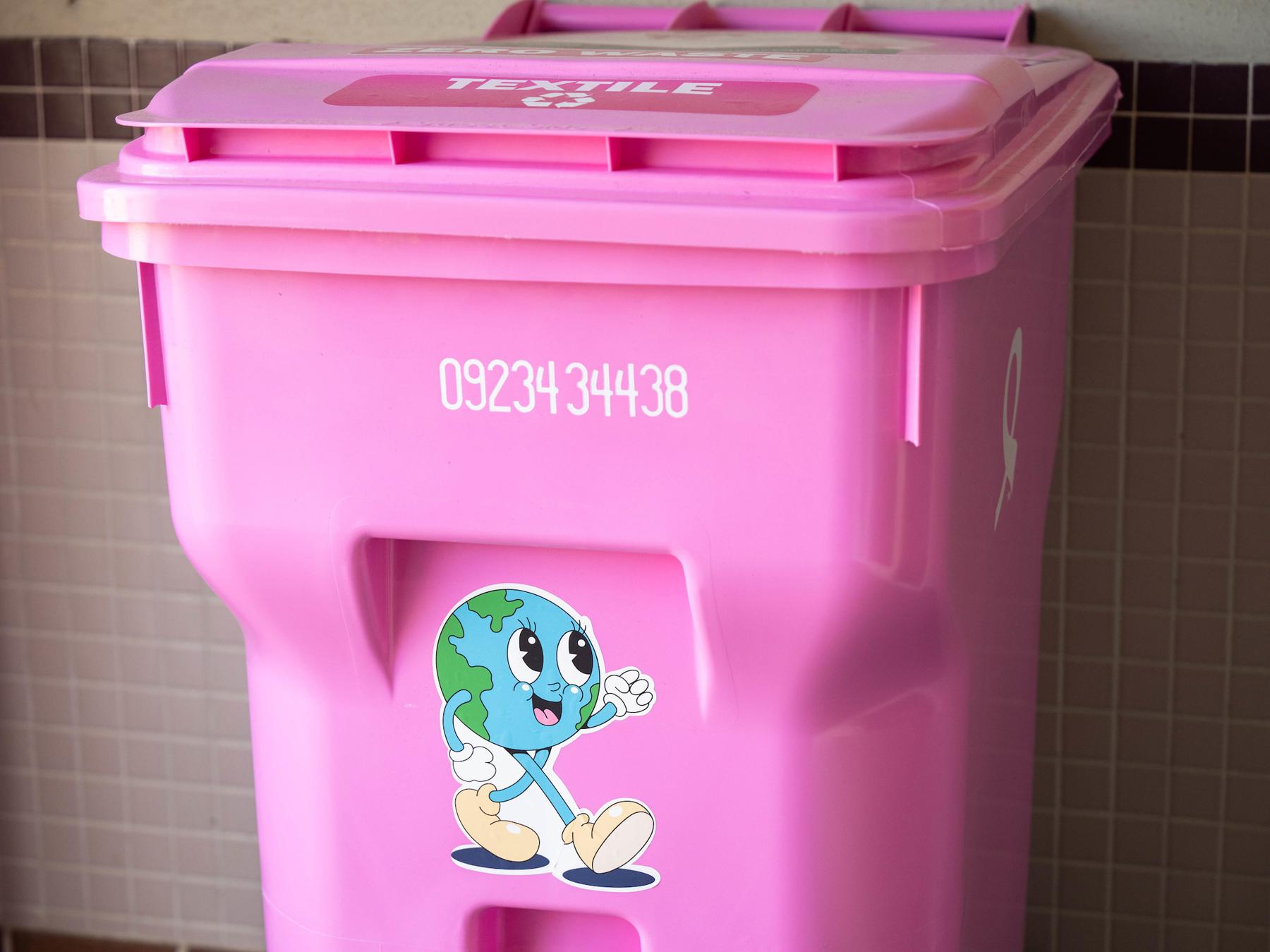DENTON (UNT), Texas — University of North Texas assistant professor Iva Jestratijevic, whose research in the College of Merchandising, Hospitality and Tourism focuses on sustainability and new methodologies in retail and fashion, is working to repurpose unwanted textiles across campus.
Jestratijevic recently launched the Zero Waste Textile initiative at UNT after receiving a $1,000 grant from the State of Texas Alliance for Recycling. She used the funds to purchase eight pink recycling bins stationed at Chilton Hall, where UNT faculty, staff and students are encouraged to deposit unwanted textiles.
“The average U.S. consumer throws away around 100 pounds of textiles annually — one of the highest rates in the world,” said Jestratijevic, a former international fashion model whose doctorate is in fashion and retailing. “This program could be breaking new ground as the first of its kind at a university in the United States.”
The initiative, which Jestratijevic implemented with voluntary assistance from current and former students of her Sustainable Strategies in Merchandising and Brand Development classes, aims to keep unwanted textiles — including fabric, clothing, shoes and accessories — out of landfills by redirecting them for repurpose and reuse.
Junior Ceceille Darter took Jestratijevic’s Branding and Promotion class during the Fall 2023 semester. After learning more about textile waste, she got involved with the initiative by designing Earthy, the cartoon-style globe logo that adorns the recycling bins.

“I learned a lot about how much textile waste is produced and how certain brands are extremely unsustainable in their practices,” Darter said.
Some donated clothing items will be distributed to UNT’s Diamond Eagle Student Resource Center, which operates the Diamond Eagle Clothing Closet as a free clothing resource to students in need.
Jestratijevic and her students recently held the initiative’s first sorting event and diverted 60 pounds of textiles from landfills. They donated more than 200 new and like-new clothing items to the Diamond Eagle Clothing Closet.
“Our main goal is to give back to the community,” Jestratijevic said. “The purpose is to engage students in service work to create a positive impact and to demonstrate that even though we generate textile waste, it is within our power to address it.”
 Additionally, campus-based “community closet” events are in development, where students
may help sort items and then shop for free clothing. Items that fail to find new purpose
at UNT will be shared with the Chickasaw Nation ReUse Center in Oklahoma and distributed
to members of its community.
Additionally, campus-based “community closet” events are in development, where students
may help sort items and then shop for free clothing. Items that fail to find new purpose
at UNT will be shared with the Chickasaw Nation ReUse Center in Oklahoma and distributed
to members of its community.
In coming months, Jestratijevic and her students plan to compile and study data collected through the Zero Waste Textile initiative, tracking brand names, the condition of donated items and how and where they ultimately are distributed through the program.
They will also examine the materials in the items to determine potential rates of decomposition, greenhouse gas emissions and soil, groundwater and air pollution that would result had they instead been sent to landfills.
“When you say ‘textile waste’ people assume you’re describing something that should be discarded,” Jestratijevic said. “They don’t understand that, in some cases, these are brand-new items.”
CMHT Dean Jana Hawley was one of the first scholars in the nation to study textile waste in the 1990s as an assistant professor at UNT. She is pleased the college served as the launching pad for the Zero Waste Textile initiative.
“The textile recycling industry has created many opportunities for textiles to find their way into second use, new materials and innovative solutions. This project not only contributes to zero-waste goals, but it also raises awareness,” Hawley said.